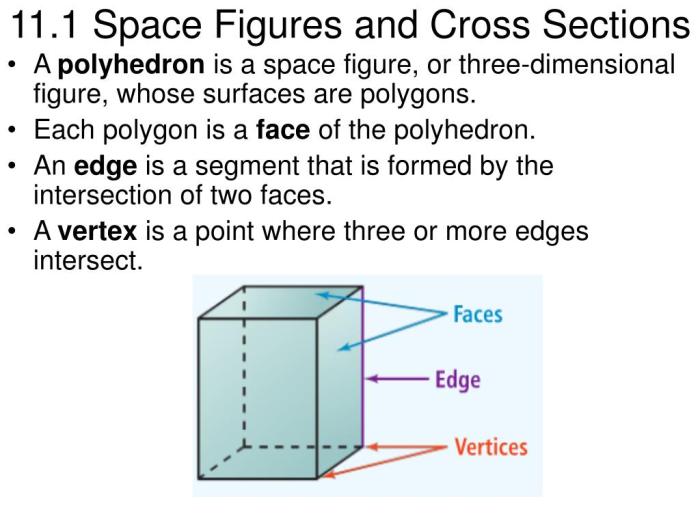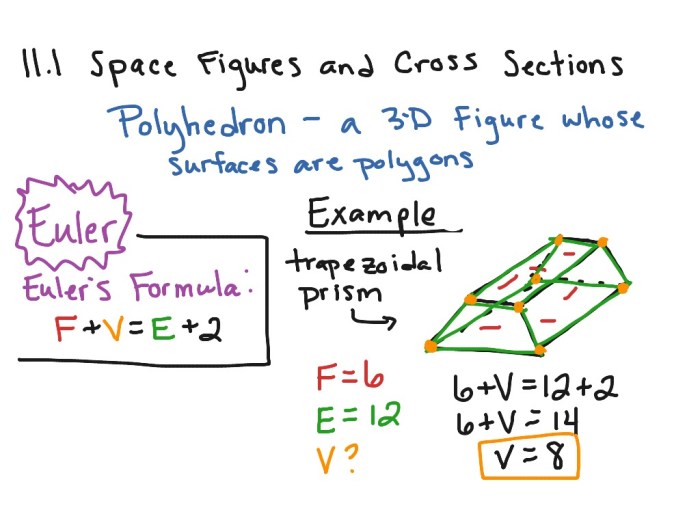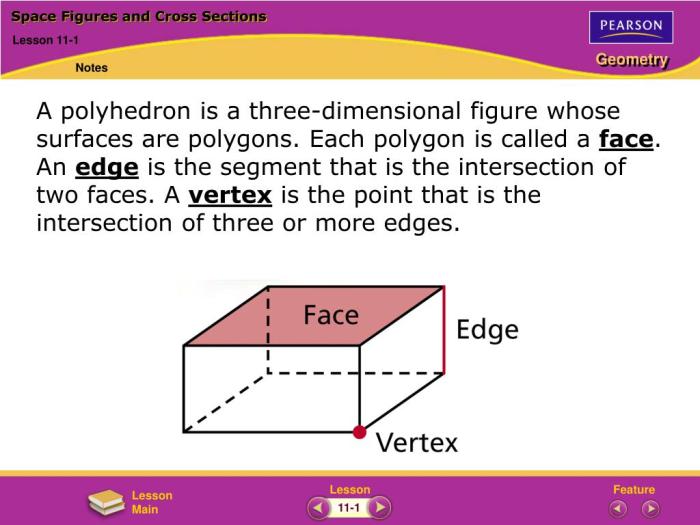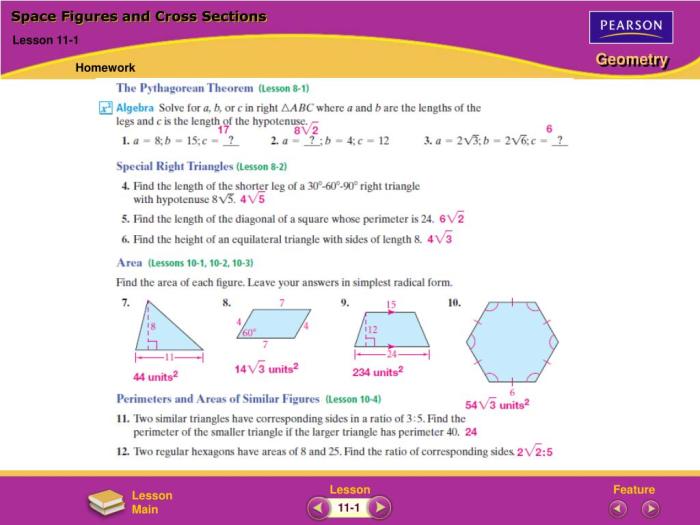Space figures and cross sections practice is a fundamental aspect of geometry that provides a powerful tool for understanding the three-dimensional world around us. Through the creation and analysis of cross sections, we gain insights into the properties, relationships, and applications of spatial figures, enabling us to solve problems, make predictions, and design complex structures.
This comprehensive guide will delve into the concepts, methods, and applications of space figures and cross sections, equipping you with a thorough understanding of this essential geometric practice.
Spatial Figures and Cross Sections

In geometry, spatial figures are three-dimensional objects that occupy space. They have length, width, and height, and can be classified into various types based on their shapes and properties.
Cross sections are two-dimensional slices of spatial figures that provide valuable insights into their internal structure. By analyzing cross sections, we can determine the shape, size, and volume of the original figure.
Methods for Creating Cross Sections, Space figures and cross sections practice
- Slicing:Cutting a spatial figure with a plane to create a two-dimensional section.
- Intersecting:Passing a plane through a spatial figure to create a cross section.
The choice of method depends on the desired cross section and the shape of the spatial figure.
Analyzing Cross Sections
- Shape:The shape of a cross section can reveal the shape of the original spatial figure.
- Size:The size of a cross section can provide information about the dimensions of the original figure.
- Volume:By analyzing multiple cross sections, we can determine the volume of the original figure.
Cross sections are a powerful tool for understanding the properties of spatial figures.
Applications of Cross Sections
- Engineering:Designing and constructing buildings, bridges, and other structures.
- Architecture:Creating blueprints and floor plans for buildings.
- Medicine:Imaging and diagnosing medical conditions using MRI and CT scans.
Cross sections play a crucial role in various fields, providing valuable insights into the structure and properties of objects.
FAQ Section: Space Figures And Cross Sections Practice
What are the different types of spatial figures?
Spatial figures include polyhedra (e.g., cubes, pyramids, prisms), spheres, cones, cylinders, and more.
How are cross sections created?
Cross sections are created by slicing a spatial figure with a plane, revealing the internal structure and properties of the figure.
What information can be obtained from cross sections?
Cross sections provide information about the shape, size, volume, and other properties of the original spatial figure.
What are some real-world applications of cross sections?
Cross sections are used in engineering for design and construction, in architecture for planning and visualization, and in medicine for medical imaging and diagnosis.



